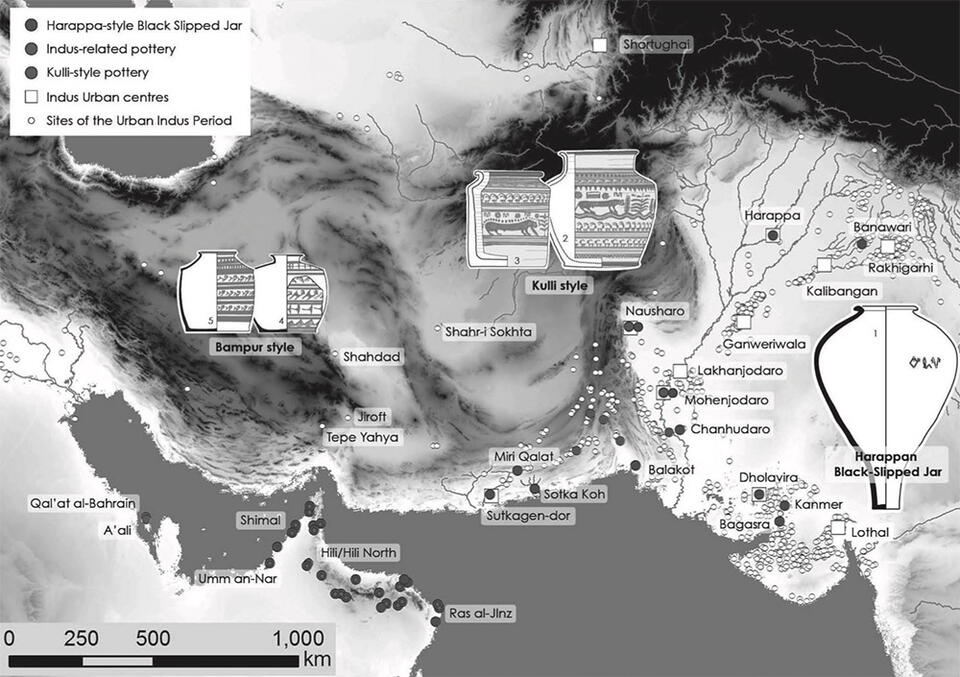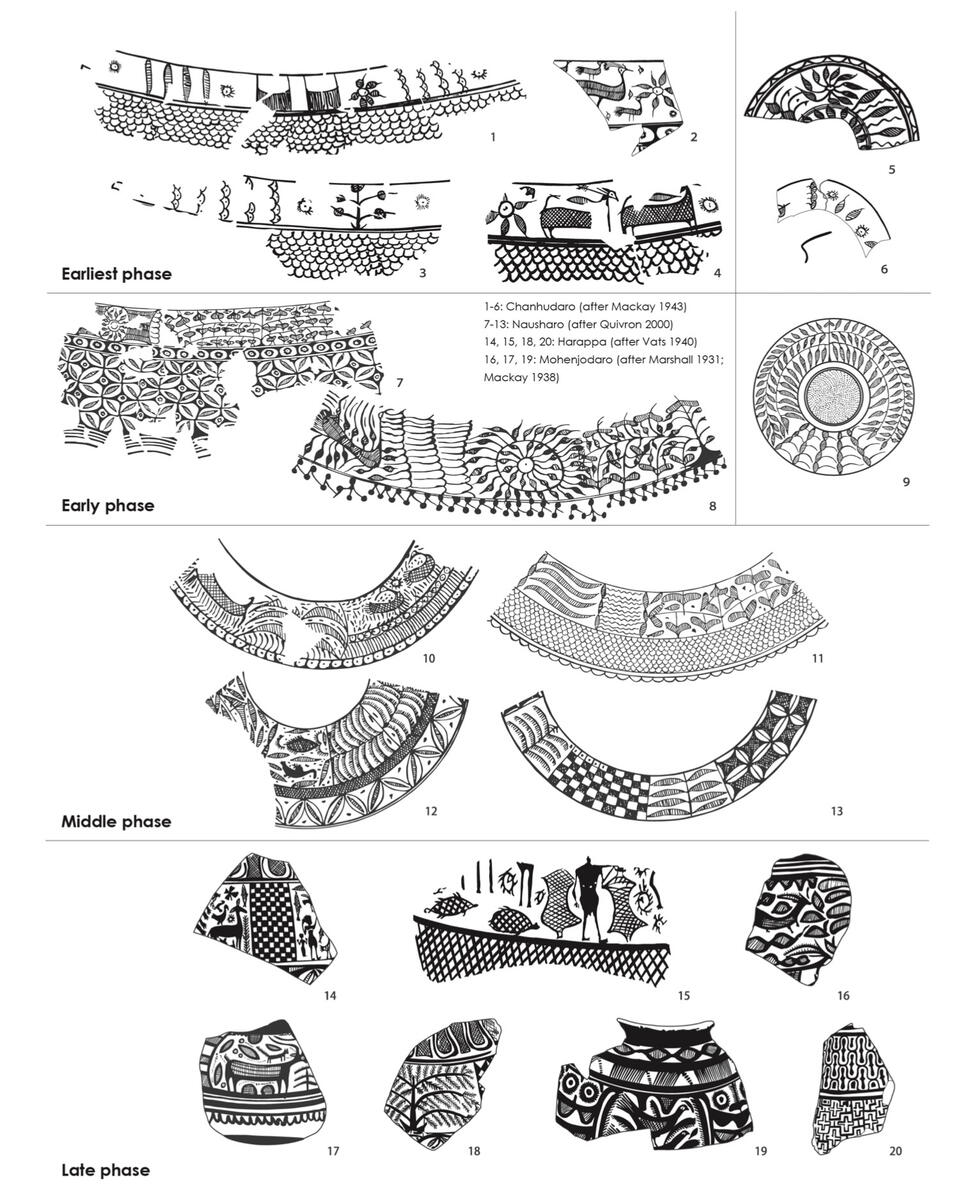"This article examines the diachronic developments of the interregional relationship between the two regions based on the ceramic evidence both from the Greater Indus Valley and the Arabian peninsula. The examination of the ceramic evidence from the Greater Indus Valley, especially the diachronic developments of the ceramic styles in this region, is crucial for assessing the Indus-related pottery from the Arabian peninsula," writes the author of this chapter in Decades in Deserts: Essays on Near Eastern Archaeology in honour of Sumio Fujii (pp. 337-355. Rokuichi Syobou, Japan, 2019).
Finely detailed drawings laying out sequences of pottery developments and dispersal across the Indus and wider regions make this a very valuable and up-to-date discussion of how styles and developments in such things as the shape of large storage jars may give us clues to how Indus and related traditions developed.
As Dr. Uesugi puts it, "One of the most crucial issues is the lack of the internal chronology for the Urban Indus period and the limited awareness to reconstruct the sequential developments and changes of the material culture in the Greater Indus Valley," (p. 351). Although seals and beads are not analyzed in conjunction with ceramic developments, these are complex enough and looking at them in relationship to what happened to Indus traditions on the Arabian peninsula is, in Uesugi's words, "an important issue to be examined to better understand the emergence and developments of urban societies in these regions. For the Indus archaeology, the evidence from the Arabian peninsula has a great potentiality for understanding the expansion and decline of the urban society. Especially the evidence from Bahrain can be used for examining the decline process of the urban society in the Greater Indus Valley. Multi- faceted studies on different types of evidence can reveal the various aspects of the interactions. The evidence from different parts of this interaction sphere must be linked with each other not only to reconstruct the entire interaction system but also to better understand the importance of regional societies involved in the interaction network" (p. 351).
Image 1: Distribution of Indus-related pottery in the Indus region and the Arabian peninsula (Sources of pottery drawings, 1: Mackay 1938; 2, 3: Uesugi 2013b, 2018; 4: De Cardi 1970; 5: Lamberg-Karlovsky and Tosi 1973).
Image 2: Figure 2 Diachronic changes in the painting style of the Harappa-style pottery (Based on the examination by Quivron 2000).




